USS Becuna (SS/AGSS-319),
English translation
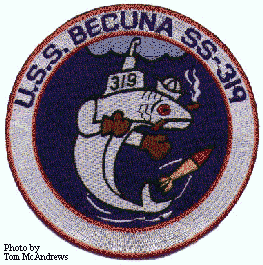 |
| Internet |
L'USS Becuna (SS319 après AGSS319), était un sous-marin de classe Balao ,une des plus prolifique classe de sous-marins américains de la 2e Guerre Mondiale
Le Becuna
C’est un poisson de la Méditerranée (Sphyraena spet) plus connu sous le nom de Barracuda Il a une mauvaise réputation. Le grand barracuda des Antilles et de la Floride est dangereux comme un requin, et à Cuba comme il a la réputation d'être toxique.
Mais il a également été utilisé comme denrées alimentaires
La classe Balao
 |
| Internet |
La classe a été la plus prolifique de la classe de sous-marins américains de la 2e Guerre Mondiale avec 128 unités construites, elle a été une amélioration par rapport à la classe Gata qui l’ a précédé
L’amélioration la plus importante amélioration a été l'utilisation de l'acier pour la coque, qui a augmenté la possibilité de plonger jusqu’à 120 m
Cette classe est une classe de sous-marin diesel électrique . Elle utilise pour la propulsion 4 moteurs diesel alimentés par des générateurs et des moteurs électriques. Il n'y a pas de lien direct entre les moteurs diesel et les arbres. En surface, tous générateurs diesel en fonction le « plein électrique » a été utilisé pour produire de 5.400 CV Toutefois, en raison du manque de capacité de la batterie, seulement la moitié de l'installation électrique peut être utilisé avec un moteur ce qui lui donne toujours la moitié de la puissance possible
L’histoire retiendra aussi que c’est un sous marin de cette classe le SS311 Archer Fish qui a coulé le plus grand navire de guerre de la 2e Guerre Mondiale En effet le29 Novembre 1944 le SS 311 Archerfish a coulé l'IJN Shinano (信浓)
USS Becuna
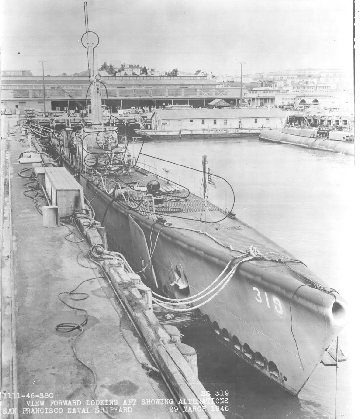 |
| Internet |
Le 29 avril 1943, la quille de l'USS Becuna a été posée au chantier naval Victory Yard of the Electric Boat Company, Groton, Connecticut. Il a été lancé le 30 Janvier, 1944, parrainé par Mme GC Crawford le 27 Mai 1944, l'USS Becuna ou "Becky" reçoit son premier commandant Henry Dixon Sturr, La période d’entrainement a eu lieu à New London le 1er Juillet 1944 et de la formation achevée au Panama, et il arrive à Pearl Harbour le 29 Juillet 1944
Depuis cette date jusqu’à 27 Juillet 1945, il a effectué cinq patrouilles de guerre dans le sud des Philippines et dans le Sud de la Mer de Chine et la mer de Java, il a été crédité de 1 ou 2 pétroliers japonais
Première patrouille
Il quitte Pearl Harbour, pour sa première patrouille et après un mois de grosse mer l’USS Becuna atteint sa zone de patrouille au sud de Formose, il attaque sans succès dans la nuit du 25 Septembre 1944, un petit convoi
Le 8 Octobre, il attaque et endommage sérieusement le Kimikawa Maru (6863 tonnes),
Le lendemain, l’ USS Becuna aperçoit un convoi de douze navires et a alerté la meute de sus marins les USS Baya SS-318 et USS Hawkbill SS-366.
Au cours de l'attaque, 2 navires ont été touchés le San Luis Maru (7268 tonnes) et le Tokuwa Maru (1943 tonnes). qui coule rapidement, mais ce navire a été attaqué aussi par l'USS Hawkbill si bien que les 2 sous-marins sont chacun crédité d’un demi sous marin. L’USS Becuna retourne à Fremantle, en Australie occidentale
Deuxième Patrouille
Le 16 Novembre 1944, l’USS Becuna commence sa deuxième patrouille dans la mer de Chine méridionale. Durant laquelle il croise la route du puissant cuirassé Yamato, mais il ne pourra pas faire feu .Sur le chemin du retour au nord du détroit de Lombok, le 2 Janvier 1945, il a détruit deux petits caboteurs pour un total de 1.100 tonnes
Il retour à Fremantle, après 53 jours de mer
Troisième Patrouille
L’ USS Becuna retourne en mer de Chine du Sud pour sa troisième patrouille durant laquelle il attaque le 22 Février un pétrolier de 7500 tonnes et ensuite l’USS Becuna retourne à Subic Bay après 46 jours de patrouille
Quatrième Patrouille
La quatrième patrouille se déroule sans incident Les navires ennemis étant rares il retourne à Fremantle, après 39 jours de patrouille. Le Capitaine Sturr laisse son commandement au lieutenant-Commodore . J. W. Bush
Cinquième Patrouille
Son cinquième patrouille débute le 21 Juin 1945, dans la mer de Chine du Sud, avec une seule attaque avec torpilles à la fin de la patrouille, en liaison avec l'USS Baya dans la nuit du 15 Juillet 1945. Tous les torpilles manquent leur but alors que l’ USS Baya plus chanceux, coule un torpilleur de la classe Otori
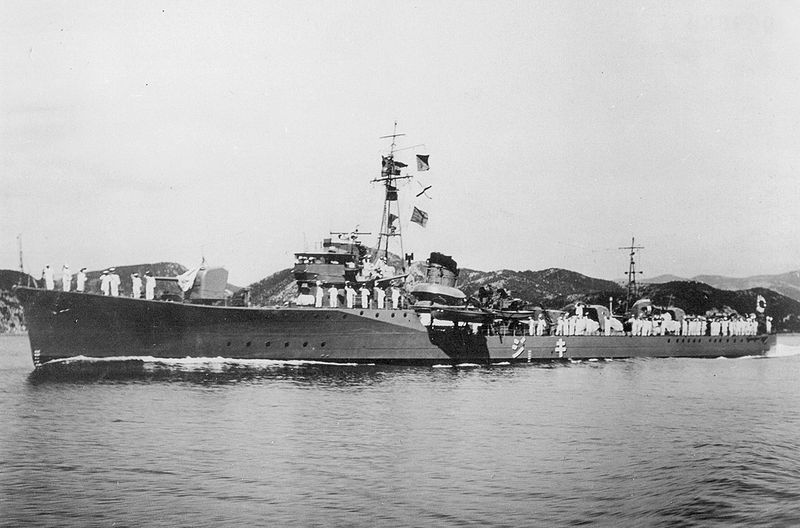 |
| Classe Otori Internet |
L’USS Becuna retourné à Subic Bay pour sa cinquième refonte. Pendant ce temps, Le Japon capitule .
L’USS l Becuna et les membres de son équipage du navire reçoivent 4 Battle Stars
Guerre froide
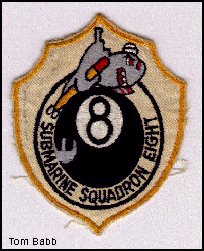 |
| Internet |
En Septembre 1945, il est arrive à San Diego où il est affecté à la Submarine Force, Atlantic Fleet, comme une unité du Submarine Squadron 8
En août 1951, commence pour l’USS Becuna une chantier de remise à niveau au chantier Electric Boat Company.
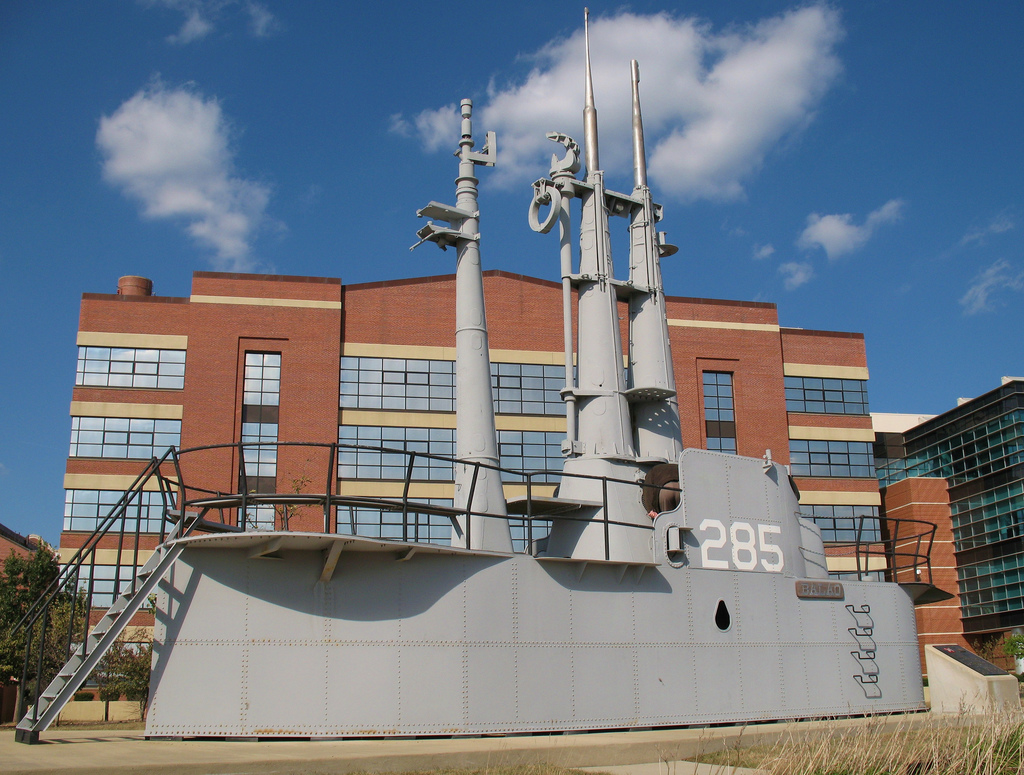 |
| Internet |
Ses superstructures sont revues notamment le kiosque qui est entièrement refait Il reçoit de nouvelles batteries Sargo II et l’armement sur le kiosque est enlevé, et était équipé d'un snorckel permettant le fonctionnement en immergé de deux de ses moteurs diesel.
Il a été rebaptisé un GUPPY 1A.
Il retourne au service actif avec en participant à de nombreux exercices et de la flotte alliée, y compris plusieurs déploiements de la Méditerranée avec la 6e flotte
En Novembre 1964,l’ USS Becuna subi une importante révision au Philadelphia Naval Shipyard, afin de recevoir les dernières améliorations et les engins électroniques, accroître sa capacité de lutte sous marines. Ensuite il participe à la formation des élèves
L’ USS Becuna est reclassé comme auxiliaire Submarine, AGSS-319, en 1969.et il est déclassé le 7 Novembre 1969, il devient alors le SS-319 en 1971.jusqu’à sa radiation définitive le 15 août 1973 du Naval Register
Depuis le 21 Juin 1976 l(USS Becuna est un musée mouillé à l’independent Seaport Museum, à Philadelphie
Liste de la classe Balao
En gras les Sous marins la classe Balao perdus .
A
Apogon (SS-308) Archerfish (SS-311) Aspro (SS-309) Atule (SS-403)
B
Balao (SS-285) Bang (SS-385) Barbero (SS-317) Batfish (SS-310) Barbel (SS-316) (lost 4 Feb, 1945)Baya (SS-318) Becuna (SS-319) Bergall (SS-320) Besugo (SS-321) Billfish (SS-286) Blackfin (SS-322) Blenny (SS-324)Blower (SS-325) Blueback (SS-326) Boarfish (SS-327) Bowfin (SS-287) Brill (SS-330) Bugara (SS-331) Bullhead (SS-332) (perdu 6 Aug, 1945) Bumper (SS-333) Burrfish (SS-312)
C
Cabezon (SS-334) Cabrilla (SS-288)Caiman (SS-323) Capelin (SS-289) (perdu 23 Nov, 1943) Capitaine (SS-336) Carbonero (SS-337) Carp (SS-338)Catfish (SS-339) Charr (SS-328)Chivo (SS-341) Chopper (SS-342) Chub (SS-329) Cisco (SS-290) (perdu 28 Sep, 1943) Clamagore (SS-343)Cobbler (SS-344) Cochino (SS-345) (perdu 26 Aug, 1949) Corporal (SS-346) Crevalle (SS-291)Cubera (SS-347) Cusk (SS-348)
D
Dentuda (SS-335) Devilfish (SS-292) Diodon (SS-349)Dogfish (SS-350) Dragonet (SS-293)
E
Entemedor (SS-340) Escolar (SS-294) (perdu Oct, 1944)
G
Greenfish (SS-351)
H
Hackleback (SS-295) Halfbeak (SS-352)Hardhead (SS-365) Hawkbill (SS-366)
I
Icefish (SS-367)
J
Jallao (SS-368)
K
Kraken (SS-370) Kete (SS-369) (perdu 20 Mar, 1945)
L
Lagarto (SS-371) (perdu 3 Mai, 1945) Lamprey (SS-372) Lancetfish (SS-296) Ling (SS-297)Lionfish (SS-298) Lizardfish (SS-373) Loggerhead (SS-374)
M
Macabi (SS-375) Manta (SS-299)Mapiro (SS-376) Menhaden (SS-377) Mero (SS-378)Moray (SS-300)
P
Pampanito (SS-383) Parche (SS-384)Perch (ii) (SS-313) Picuda (SS-382) Pilotfish (SS-386)Pintado (SS-387) Pipefish (SS-388) Piper (SS-409)Piranha (SS-389) Plaice (SS-390)Pomfret (SS-391)
Q
Queenfish (SS-393)
R
Razorback (SS-394) Redfish (SS-395) Roncador (SS-301) Ronquil (SS-396)
S
Sabalo (SS-302) Sablefish (SS-303) Sand Lance (SS-381) Scabbardfish (SS-397) Sea Cat (SS-399) Sea Devil (SS-400) Sea Dog (SS-401) Sea Fox (SS-402)Sea Owl (SS-405) Sea Poacher (SS-406)Sea Robin (SS-407)Seahorse (SS-304) Sealion (II) (SS-315) Segundo (SS-398)Sennet (SS-408) Shark (II) (SS-314) (perdu 24 Oct, 1944)Skate (SS-305) Spadefish (SS-411) Spikefish (SS-404) Spot (SS-413) Springer (SS-414) Sterlet (SS-392) Stickleback (SS-415) (perdu 28 May, 1958)
T
Tang (SS-306) (perdu 24 Oct,1944)Threadfin (SS-410) Tilefish (SS-307) Tiru (SS-416) Trepang (SS-412)
Caractéristiques 1943
Constructeur: Electric Boat Company Groton Connecticut
Déplacement: 1526 tonnes surface
1424 tonnes immergé
Equipage: 10 officiers, 70-71 enrôlés
Longueur: 95,0 m
Largeur: 8,3 m
Tirant d'eau: 5,1 m
Propulsion:
4 × général Modèle moteur diesel 16-278a V 16
2 × 126-Sargo Batteries
4 × GE à haute vitesse des moteurs électriques
deux hélices [2]
Vitesse: 20.25Knot 38 km / h surface
8.75 nœuds (16 km / h) submergés
Plage: 20000 km revêtues à 10 nœuds (19 km / h)
Endurance: 48 heures à 2 nœuds (3,7 km / h) submergés
75 jours de patrouille
Test de profondeur:
Armement: 10 x 21 pouces (533 mm) tubes des torpilles (six en avant, quatre en arrière)
24 torpilles
1 × 5 pouces (127 mm)
Spécifications Guppy IA
Déplacement:
1.830 tonnes (1.859 t) surface
2.440 tonnes (2.479 t) submergés
Equipage 10 officiers 5 officiers soldats 64-69
Longueur: 93,8 m
Largeur: 8,3 m
Tirant d'eau: 5,2 m
Propulsion
Même
Batteries Sargo je mis à jour
Vitesse
Surface
17,3 nœuds (32,0 km / h) maximum
12,5 nœuds (23,2 km / h) en croisière
Immarge15,0 nudes (27,8 km / h) pendant une demi-heure
7,5 nœuds (13,9 km / h),
3,0 noeuds (5,6 km / h) en croisière
Autonomie 28000 km à 11 noeuds (20 km / h
Endurance: 36 heures à 3 noeuds (6 km / h) submergés
Armement
10x21 pouces (533 mm) tubes des torpilles (six en avant, quatre en arrière)
24 torpilles
Toutes les armes ont été enlevées
Autres informations Others Informations ICI HERE
Photoscope Walk Around ICI HERE
USS Becuna (SS/AGSS-319),
 |
| Internet |
The USS Becuna (SS319 after AGSS319 ),was a Balao-class submarine, the most prolific class of US Submarines during WW2
The Becuna
Is a fish of the Mediterranean (Sphyraena spet) more know as Barracuda He has a bad reputation . The great barracuda of the West Indies and Florida is dangerous as a shark,and in Cuba he as the reputation to be poisonous.
But he was also used as food
The Balao Class
 |
| Internet |
The Balao class was the most prolific class of US Submarines during WW2 with 128 units built, She was an improvement on the earlier Gato class, The most significant improvement was the use of new steel for the hull , which increased possibility to dive since 120 m
This class was a diesel electric submarine and she use for propulsion 4 diesel engines powered by electrical generators and motors . There was no direct connection between the diesel engines and the shafts. On the surface, with all diesel generators in operation, the full electric plant was used to produce 5,400 shp. However, due to limited battery capacity, only half of the electric plant was used underwater: one motor per shaft on four-motor boats, and one armature per motor on two-motor boats One of the Balao class the SS311 Archer Fish as the record today unconquered of the the largest ship sunk by a submarine
On November 29th 1944 he sunk the IJN Shinano (信濃)
USS Becuna
 |
| Internet |
On April 29, 1943, the keel of the USS Becuna was laid at the Victory Yard of the Electric Boat Company, Groton, Connecticut. An he was launched on January 30th , 1944 sponsored by Mrs. G.C. Crawford On May 27th 1944, the USS Becuna or "Becky" was commissionedwith his first commander Henry Dixon Sturr, The shakedown period took place at New London on July 1st 1944 and further training was completed at Panama and he arrive at Perl harbour on July 29th
Since this dato to July 27th 1945 he completed five war patrols in Phillipines south china and Java seas and he was credited having sunk 1 or 2 japanese tankers
First patrol
He leave Pearl Harbour for his first patrol and after a month of heavy seas USS Becuna reached her patrol area south of Formosa he attack without success on the night of September 25th 1944 a small convoy
On October 8th he attack and damage gravely the Kimikawa Maru (6863 tons),
On th next day USS Becuna sighted a twelve-ship convoy and alerted her fellow wolfpack subs, USSBaya SS-318 and USS Hawkbill SS-366. During the attack 2 ships were hit the San Luis Maru (7268 tons) and the Tokuwa Maru (1943 tons). who promptly sank, But this ship was attacked also by the USS Hawkbill so the 2 submarines have half credit each for the kill. USS Becuna returned to Freemantle, in West Australia
Second Patrol
On November 16th 1944,USS Becuna commenced her second patrol in the South China Sea. On this patrol he cross the road of the mighty battleship Yamato, 71,000 tons but he could not fire On the way home just north of Lombok Strait, on January 2nd 1945, he destroyed two coastal freighters totaling 1100 tons with his gun
He return to Freemantle after 53 days at sea
Third Patrol
Becuna returned to South China Sea for her third patrol where on February 22th he attack 7500 tons tanker USS Becuna return to Subic Bay between patrols for refit and refueling after 46 days on patrol
Fourth Patrol
The fourth patrol was uneventful outing. Because enemy shipping become very scarce, and he returned to Freemantle after 39 days on patrol. Captain Sturr let his command to Lt. Comdr. W. J. Bush
Fifth Patrol
 |
| Otori Class Internet |
His fifth patrol began on June 21st 1945,in the South China Sea, He make a lone torpedo attack in the final patrol in conjunction with the USS Baya on the night of July 15th 1945. All torpedoes missed USS Baya was more lucky because he sank a Otori class torpedo boat
Becuna returned to Subic Bay for her fifth refit. During this time, the Japanese Empire collapsed.
For his job Becuna crew members decorated and the ship receive 4 battle stars .
Cold War
 |
| Internet |
In September 1945 he arrived at San Diego where he continued to operate with Submarine Force, Pacific Fleet, until April 1949
At this time he was ordered to Submarine Force, Atlantic Fleet, as a unit of Submarine Squadron 8
In August 1951, Becuna completed an extensive overhaul period at Electric Boat Company.
 |
| Internet |
Her superstructure was streamlined, the area around her periscope shears enclosed. She received an improved Sargo II battery package, her deck guns were removed, and was equipped with a snorkel which permitted the submerged operation of two of her diesels.
He was redesignated a GUPPY 1A.
He return in service with other naval forces and air units by participating in many Allied and fleet exercises, including several Mediterranean deployments with the 6th Fleet
In November 1964, USS Becuna underwent an extensive overhaul at the Philadelphia Naval Shipyard, receiving the latest electronic improvements and gear, greatly enhancing her underwater fighting capabilities. He provided countless services to the U.S. Submarine School by taking students aboard an operating submarine USS Becuna was reclassified as Auxiliary Submarine, AGSS-319, in 1969.and he was decommissioned, on November 7th 1969 He reverted to SS-319 in 1971. And he was struck on August 15th 1973 from the naval register
Since June 21th 1976 USS Becuna was placed on permanent display at the Independent Seaport Museum in Philadelphia
List of the Balao Class
Submarines of the Balao class lost.
A
Apogon (SS-308) Archerfish (SS-311) Aspro (SS-309) Atule (SS-403)
B
Balao (SS-285) Bang (SS-385) Barbero (SS-317) Batfish (SS-310) Barbel (SS-316) (lost 4 Feb, 1945)Baya (SS-318) Becuna (SS-319) Bergall (SS-320) Besugo (SS-321) Billfish (SS-286) Blackfin (SS-322) Blenny (SS-324)Blower (SS-325) Blueback (SS-326) Boarfish (SS-327) Bowfin (SS-287) Brill (SS-330) Bugara (SS-331) Bullhead (SS-332) (lost 6 Aug, 1945) Bumper (SS-333) Burrfish (SS-312)
C
Cabezon (SS-334) Cabrilla (SS-288)Caiman (SS-323) Capelin (SS-289) (lost 23 Nov, 1943) Capitaine (SS-336) Carbonero (SS-337) Carp (SS-338)Catfish (SS-339) Charr (SS-328)Chivo (SS-341) Chopper (SS-342) Chub (SS-329) Cisco (SS-290) (lost 28 Sep, 1943) Clamagore (SS-343)Cobbler (SS-344) Cochino (SS-345) (lost 26 Aug, 1949) Corporal (SS-346) Crevalle (SS-291)Cubera (SS-347) Cusk (SS-348)
D
Dentuda (SS-335) Devilfish (SS-292) Diodon (SS-349)Dogfish (SS-350) Dragonet (SS-293)
E
Entemedor (SS-340) Escolar (SS-294) (lost Oct, 1944)
G
Greenfish (SS-351)
H
Hackleback (SS-295) Halfbeak (SS-352)Hardhead (SS-365) Hawkbill (SS-366)
I
Icefish (SS-367)
J
Jallao (SS-368)
K
Kraken (SS-370) Kete (SS-369) (lost 20 Mar, 1945)
L
Lagarto (SS-371) (lost 3 May, 1945) Lamprey (SS-372) Lancetfish (SS-296) Ling (SS-297)Lionfish (SS-298) Lizardfish (SS-373) Loggerhead (SS-374)
M
Macabi (SS-375) Manta (SS-299)Mapiro (SS-376) Menhaden (SS-377) Mero (SS-378)Moray (SS-300)
P
Pampanito (SS-383) Parche (SS-384)Perch (ii) (SS-313) Picuda (SS-382) Pilotfish (SS-386)Pintado (SS-387) Pipefish (SS-388) Piper (SS-409)Piranha (SS-389) Plaice (SS-390)Pomfret (SS-391)
Q
Queenfish (SS-393)
R
Razorback (SS-394) Redfish (SS-395) Roncador (SS-301) Ronquil (SS-396)
S
Sabalo (SS-302) Sablefish (SS-303) Sand Lance (SS-381) Scabbardfish (SS-397) Sea Cat (SS-399) Sea Devil (SS-400) Sea Dog (SS-401) Sea Fox (SS-402)Sea Owl (SS-405) Sea Poacher (SS-406)Sea Robin (SS-407)Seahorse (SS-304) Sealion (II) (SS-315) Segundo (SS-398)Sennet (SS-408) Shark (II) (SS-314) (lost 24 Oct, 1944)Skate (SS-305) Spadefish (SS-411) Spikefish (SS-404) Spot (SS-413) Springer (SS-414) Sterlet (SS-392) Stickleback (SS-415) (lost 28 May, 1958)
T
Tang (SS-306) (lost 24 Oct,1944)Threadfin (SS-410) Tilefish (SS-307) Tiru (SS-416) Trepang (SS-412)
Technical data 1943
Builder: Electric Boat Company Groton Connecticut
Displacement: 1,526 tons surfaced
424 tons submerged
Complement: 10 officers, 70–71 enlisted
Length: 95.0 m
Beam: 8.3 m
Draft:5.1 m
Propulsion:
4 ×General motor Model 16-278A diesel V 16
2 × 126-Sargo Batteries
4 × high-speed GE electric motors
two propellers [2]
Speed: 20.25Knot 38 km/h surfaced
8.75 knots (16 km/h) submerged
Range: 20,000 km surfaced at 10 knots (19 km/h)
Endurance: 48 hours at 2 knots (3.7 km/h) submerged
75 days on patrol
Test depth:
Armament: 10 × 21-inch (533 mm) torpedoes tubes(six forward, four aft)
24 torpedoes
1 × 5-inch (127 mm)
Specifications as Guppy IA
Displacement:
1,830 tons (1,859 t) surfaced
2,440 tons (2,479 t) submerged
Complement
10 officers 5 petty officers 64–69 enlisted men
Length:93.8 m
Beam: 8.3 m
Draft:5.2 m
Propulsion
Same
Batteries upgraded to Sargo I
Speed
Surfaced
17.3 knots (32.0 km/h) maximum
12.5 knots (23.2 km/h) cruising
Submerged:
15.0 knots (27.8 km/h) for ½ hour
7.5 knots (13.9 km/h) snorkeling
3.0 knots (5.6 km/h) cruising
Range: 28,000 km surfaced at 11 knots (20 km/h
Endurance: 36 hours at 3 knots (6 km/h) submerged
Armament
10x21-inch (533 mm) torpedoes tubes(six forward, four aft)
24 torpedoes
All guns removed
.
.







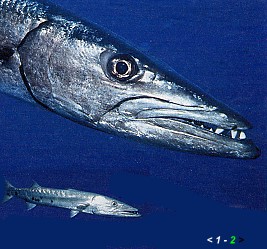





.jpg)